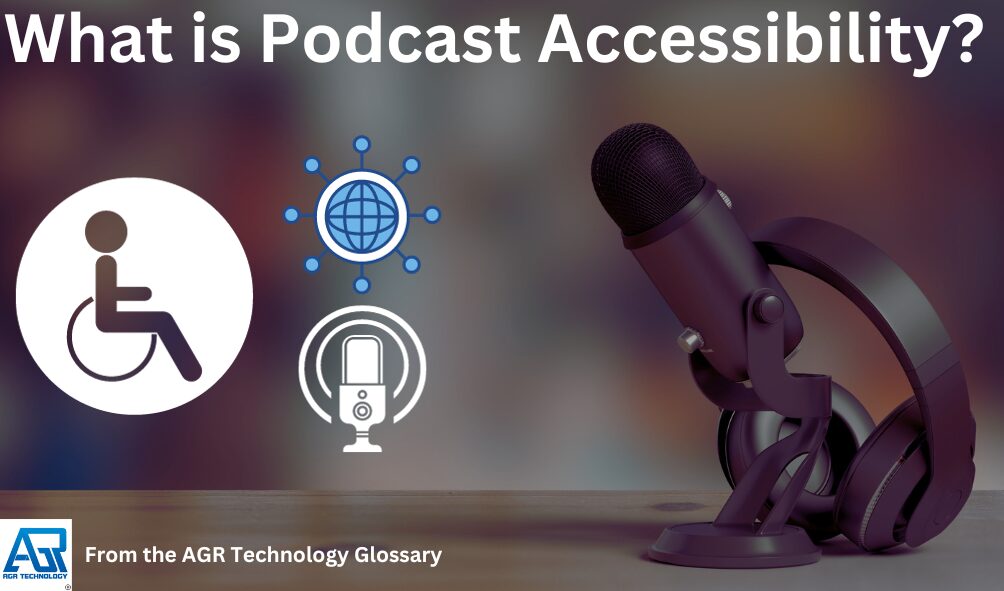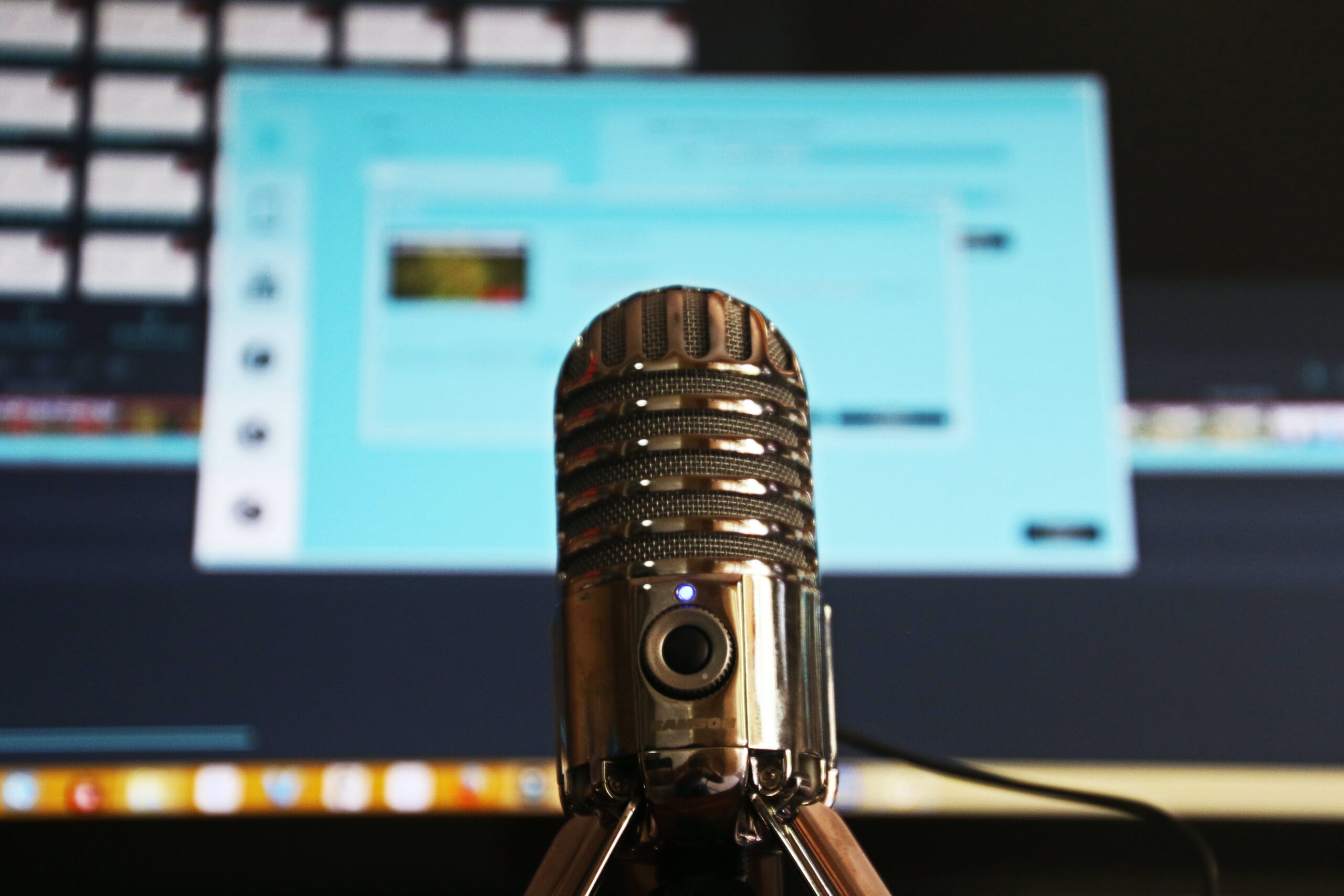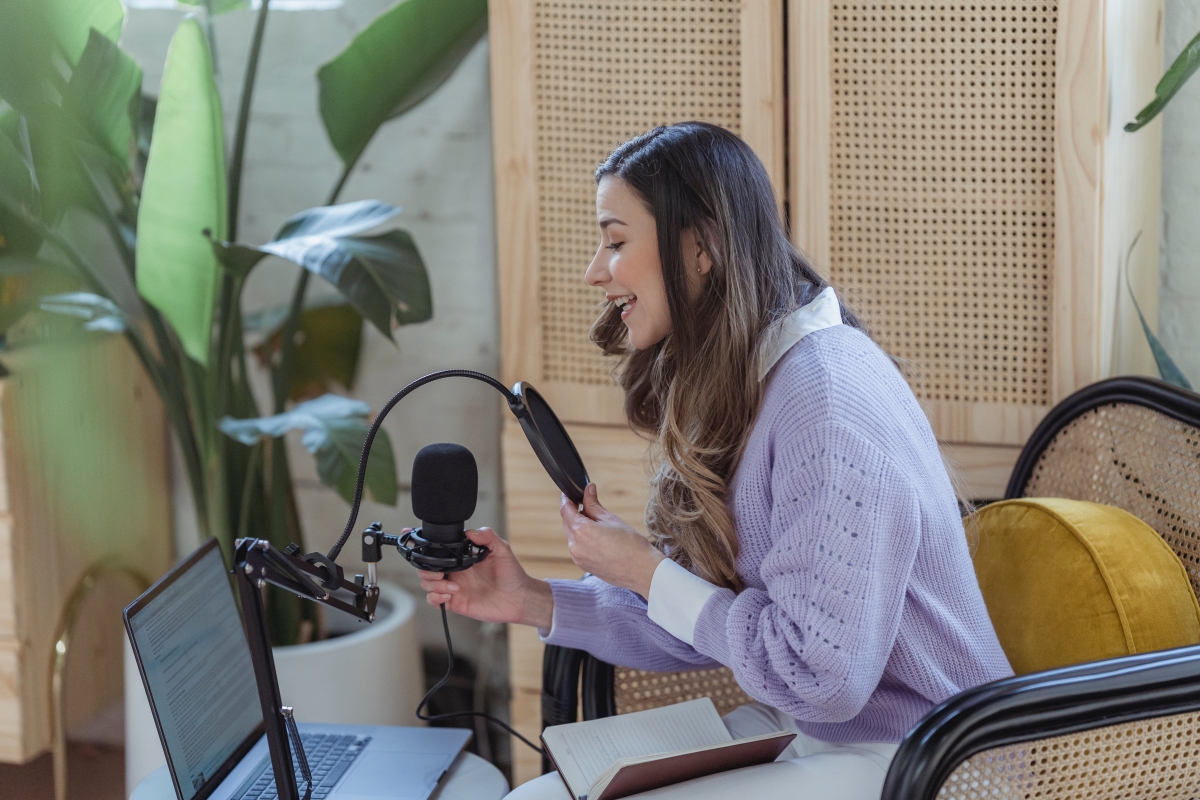What is Podcast Accessibility? Enhancing the Experience for All Users

Podcast accessibility refers to the inclusivity and ease with which people, regardless of their abilities or disabilities, can access and benefit from podcast content. Accessible podcasts ensure that individuals with visual, auditory, motor, and cognitive challenges can enjoy the rapidly expanding world of audio content alongside their peers. This involves creating podcasts that accommodate various needs, such as those who require transcripts for hearing difficulties or visual cues for those with cognitive impairments and is important if you want to build a quality podcast and host it online for many listeners to tune-in on.
Ensuring podcast accessibility is not only a matter of inclusivity but also reaches a wider audience, increasing the overall listenership. By adhering to web accessibility best practices, podcast creators can make their content more discoverable and enjoyable for all. This may include providing transcripts, using clear and descriptive language, or integrating assistive technologies. Furthermore, with the rise of voice search and smart devices, optimizing for accessibility can also enhance visibility in these new and growing platforms for example been recommended by platforms like Siri and Amazon Alexa.
Key Takeaways
- Accessible podcasts provide an inclusive experience for all listeners, regardless of abilities
- Adherence to web accessibility best practices broadens a podcast’s reach and audience
- Embracing accessibility can improve a podcast’s discoverability in emerging technologies
Understanding Podcast Accessibility
Podcast accessibility ensures that this growing medium can be enjoyed by all listeners, including those with disabilities such as the deaf and hard of hearing. These measures broaden the audience and create an inclusive experience.
Importance for Listeners with Disabilities
For listeners with disabilities, accessible podcasts mean equal opportunities to engage with content that might otherwise be inaccessible. It represents a commitment from content creators to acknowledge the spectrum of their audience’s needs. By integrating features like transcripts or sign language interpretation, individuals who have low vision can enjoy podcasts. Moreover, creating accessible podcasts isn’t just beneficial for those with disabilities; it enhances the usability for all listeners by providing options like text versions of audio content that might be useful in loud or sound-sensitive environments.
Creating Accessible Podcast Content
Enhancing the accessibility of podcast content involves several key practices such as providing transcripts, using accessible media players, and incorporating visual elements with descriptive alt text. These adaptations help ensure that everyone, including individuals with disabilities, can enjoy and benefit from podcasts.
Incorporating Transcripts and Captions
Transcripts offer a written record of audio content, which is essential for individuals who are deaf or hard of hearing. Providing a transcript for every episode not only benefits those with hearing disabilities but also supports users who prefer reading to listening or those in sound-sensitive environments. Similarly, captions can be included in video podcasts to deliver real-time text alongside spoken dialogue.
Utilizing an Accessible Media Player
An accessible media player is key to enabling all users to navigate and control podcast playback effectively. This player should be compatible with assistive technologies such as screen readers, and feature clearly labeled buttons for play, pause, skip, and volume control. It’s also crucial to ensure that the player supports keyboard navigation for users who cannot use a mouse.
Enhancing Content through Audiograms and Alt Text
Audiograms, which are audio clips paired with static images or simple animations, can enrich the podcast experience for users who are visual learners. To be accessible, these audiograms need descriptive alt text for the visual component, allowing individuals who use screen readers to understand what is being shown. This descriptive text should be succinct yet detailed enough to convey the gist of the visual element.
Web Accessibility Best Practices
Making a website accessible ensures it can be used by as many people as possible, including those with disabilities. This not only benefits users with accessibility needs but also improves SEO and overall user experience.
Developing an Accessible Website
An accessible website is designed to accommodate all users on all devices. This means providing functionality and information that can be accessed by everyone, regardless of how they interact with the internet. It includes creating content that is easy to understand and navigate, with a structure that screen readers can interpret. To achieve this, developers should:
- Use semantic HTML tags like
<header>,<footer>,<nav>, and<main>to structure the content properly - Ensure all interactive elements are keyboard-accessible, meaning they can be navigated using the tab key
- Provide alternative text for non-text content, which helps users who rely on screen readers to understand the context of images, charts, and other visual elements
Ensuring Color Contrast and Screen Reader Compatibility
Good design and accessibility should go hand in hand, with color contrast playing a crucial role. Users with visual impairments must be able to perceive content on the website without strain.
- Color contrast ratios should meet the Web Content Accessibility Guidelines (WCAG) to ensure text stands out against background colors. The minimum contrast ratio should be 4.5:1 for normal text and 3:1 for large text.
When it comes to screen readers, websites should be designed to be fully compatible. This means:
- Ensuring that all content is read in the correct order, which involves proper use of HTML elements and ARIA (Accessible Rich Internet Applications) landmarks.
- Using ARIA labels and roles when necessary to provide screen reader users with the same information that sighted users receive through visual cues.
Leveraging Podcast Accessibility for Greater Reach

To effectively broaden a podcast’s reach, it is crucial to adopt strategies that make content accessible to a wider audience and optimize its presence on search engines.
Expanding to a Wider Audience
Transcripts: To make podcasts accessible to individuals who are deaf or hard of hearing, providing transcripts is necessary. These transcripts not only serve as an inclusive practice but also enrich the content’s value for those who might prefer reading over listening.
Distribution: Sharing podcasts across various platforms, such as Facebook and YouTube, allows creators to tap into different user bases, thereby increasing the probability of reaching a more diverse audience.
Optimizing for Search Engines
SEO Practices: Podcasts with well-researched keywords have a higher potential to rank on search engines, drawing in listeners actively searching for related topics. Consistent use of relevant keywords in episode titles and descriptions can significantly boost visibility.
Engagement Through Social Media: Leveraging platforms like Facebook to generate conversations around podcast episodes can lead to higher engagement, which in turn signals to search engines the content’s relevance, potentially improving its search rankings.
Practical Steps to Improve Podcast Accessibility

Enhancing podcast accessibility is essential for reaching a broader audience, including those with hearing impairments. Implementing transcripts and subtitles are two practical steps that facilitate inclusivity and help all listeners engage with podcast content.
How to Create and Link Transcripts
To create transcripts, podcast producers can utilize transcription services such as Temi or Rev, which offer accurate and timely transcriptions. Once the transcript is generated, it’s crucial to ensure that it’s linked directly from the podcast page, allowing users to easily access and follow along with the audio content. This not only aids individuals with hearing disabilities but also those who may prefer reading content. Additionally, providing transcripts can improve a podcast’s SEO performance, making it more discoverable online.
Tips for Closed Captioning and Subtitles
When considering closed captions and subtitles, it’s important to adhere to best practices. This includes ensuring that captions are:
- Synchronized and appearing at approximately the same time as the spoken words
- Accurate in terms of spelling and grammar to convey the true meaning
- Complete by covering all spoken words and non-speech audio that is crucial for understanding
Captions and subtitles should be easy to read, so selecting an appropriate font size and color that contrasts with the background is important. By following these guidelines, podcast creators will make their content more accessible to a wider audience, including those for whom audio alone is not a sufficient medium.
Frequently Asked Questions
Podcast accessibility is vital for ensuring that all audiences, including those with disabilities, can enjoy and learn from podcast content. Key considerations involve compliance with laws, the incorporation of accessible features, and the provision of visual and audio materials to meet diverse needs.
How can podcast platforms ensure compliance with accessibility laws and regulations?
Podcast platforms can ensure compliance by adhering to standards such as the Web Content Accessibility Guidelines (WCAG) and supporting legislation like Section 508. These frameworks provide guidelines for creating accessible podcast content, which may include providing transcripts, sign language interpretations, and adjustable control features.
Which features make a podcast player accessible to individuals with disabilities?
A podcast player becomes accessible through features like screen reader support, transcript availability, keyboard navigation, and adjustable playback speeds. Visual accommodations such as high contrast mode and sign language interpretation also contribute to a more accessible experience.
What role do transcripts play in making podcasts more accessible?
Transcripts play a crucial role by providing a text-based version of audio content, enabling access for deaf and hard of hearing users as well as non-native speakers. Transcripts enhance comprehension and allow users to engage with content at their own pace, significantly improving accessibility.
Are there any specific media players known for their high level of accessibility for podcasts?
While there are many media players available, those known for their high level of accessibility often feature compatibility with assistive technologies, user-friendly interfaces, and customization options that support various needs.
How does the concept of audio accessibility enhance the podcast listening experience?
Audio accessibility ensures that podcasts are understandable and enjoyable for listeners with disabilities by incorporating clear pronunciation, adjustable volumes, descriptive language, and consistent sound quality. This thoughtful approach allows all listeners to fully experience the podcast’s content.
Is it possible to both watch and listen to podcasts, accommodating different accessibility needs?
Yes, some podcasts offer video formats that include visual elements, such as sign language interpretation or closed captions, catering to a variety of accessibility needs. This format allows users to choose between watching or listening, or to use both methods for a more comprehensive understanding of the podcast’s message.
Other content on our website:
Source(s) cited:
Francis, Taylor &. “Inclusive Podcast Pedagogies” Three Models and Strategies for Cr, 31 Aug. 2023, www.taylorfrancis.com/chapters/edit/10.4324/9781003316336-18/inclusive-podcast-pedagogies-colby-king-celena-kusch. Accessed 13 Jan. 2024.
C. T. Matava, (2013). eLearning among Canadian anesthesia residents: a survey of podcast use and content needs [Online]. Full Text. Available at: https://bmcmededuc.biomedcentral.com/articles/10.1186/1472-6920-13-59 (Accessed: 13 January 2024).
Patti, Christine. “Creating an Enhanced Podcast with Section 508.” Learning & Technology Library (LearnTechLib). October 26, 2009. Accessed January 13, 2024. https://www.learntechlib.org/p/32705/.
![logo-new-23[1] logo-new-23[1]](https://agrtech.com.au/wp-content/uploads/elementor/thumbs/logo-new-231-qad2sqbr9f0wlvza81xod18hkirbk9apc0elfhpco4.png)